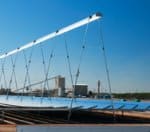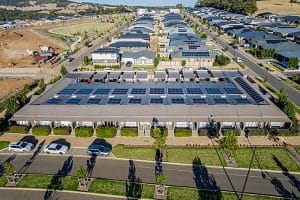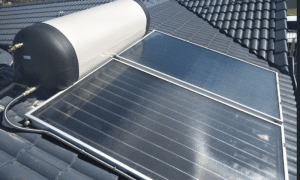An old fired coal fired power plant in Tucson Arizona that reportedly belches over a million tons of greenhouse gas emissions a year will be expanded soon; but this time, solar power will provide extra generation capacity.
Tucson Electric Power (TEP) is the owner of H. Wilson Sundt Generating Station, currently a 173 megawatt plant. First commissioned in 1967, according to SourceWatch the facility generates around 1,067,132 tons of carbon dioxide emissions a year (2006 figures).
As the area that the power station serves grows and electricity demand increases; instead of adding more fossil fuel based capacity, TEP are turning to the same renewable energy technology that will soon be used on a much larger scale in Queensland.
TEP’s Sundt Solar Boost Project will incorporate a 5MW Concentrated Solar Power (CSP) unit supplied by AREVA Solar to produce enough additional electricity to serve more than 600 Tucson homes and avoid the burning of 3,600 tons of coal a year.
“AREVA Solar’s innovative solar boost technology gives us a cost-effective, environmentally responsible way to expand the output of our largest local power plant without increasing emissions,” said Paul Bonavia, Chairman and Chief Executive Officer of TEP.
Construction of the Sundt Solar Boost is expected to begin in a few months and by operation by early next year.
AREVA Solar’s Compact Linear Fresnel Reflector (CLFR) technology will also soon be used in Australia for a similar application. The $104.7 million Kogan Creek Solar Boost project in Queensland will be the largest deployment of AREVA’s solar thermal technology in the world; generating 44,000 megawatt hours of electricity annually.
A Compact Linear Fresnel Reflector system is comprised of mirrors focusing sunlight at much higher than normal intensity onto an absorber. The absorber heats a fluid inside, which is then pumped through a heat exchange system to generate steam and power a turbine.
Related:
Solar Power In Queensland







































